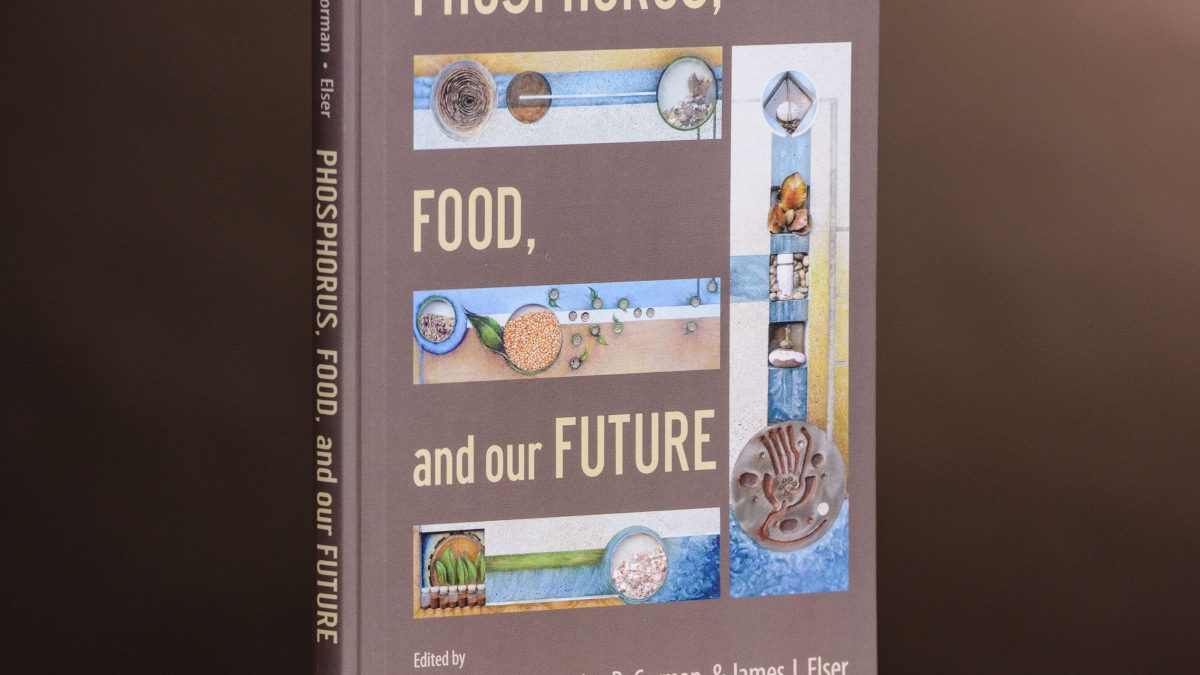Sustaining an element essential to human life

Phosphorus is an element that is as essential to life as the food we eat.
As an integral ingredient in fertilizer, phosphorus enables high-yield agriculture and sustains life. Yet phosphate fertilizer is produced by mining non-renewable deposits located in just a few countries. And the same element that enables crops to flourish in industrialized countries can also pollute waterways from run-off and create algae blooms that collapse and kill fish.
Phosphorus has spurred much concern among scientists due to erratic and rising prices, with some predictions pointing to scarcity bottlenecks as early as 2034. Approximately 90 percent of the element is mined in Morocco and Western Sahara, China, South Africa, Jordan and the United States.
“Phosphorus is a classic double-edged sword. If there isn’t enough on our crops, they fail, and if there is too much in our lakes, they fail. So there are big challenges, such as how to keep the phosphorus where it belongs and how to make sure we have enough phosphorus for the long term,” said Arizona State University Regents’ Professor and phosphorus scientist James Elser.
A new book, “Phosphorus, Food, and Our Future” (Oxford University Press, 2013), coalesces the many forces that influence the phosphorus debate into one comprehensive examination of the issue from more than 45 leading scientists, government officials and private enterprise representatives such as miners, farmers and wastewater engineers.
The impetus for the book grew from the first international conference on sustainable phosphorus held in the United States, the Frontiers in Life Sciences: Sustainable Phosphorus Summit.
“The conference brought all of the right people together to talk about the phosphorus issues. People like miners could talk to wastewater engineers and so forth,” said ASU biology graduate student Karl Wyant, who edited the book with biology graduate student Jessica Corman and Elser, Regents' Professor in the School of Life Sciences in the College of Liberal Arts and Sciences.
“Being a part of this book was an incredible experience. As graduate students, you are often expected to focus solely on your dissertation work. But we (Karl and I) were able to take a step out of this box and work with some amazing researchers on a very important, yet not well-studied, issue. I look forward to seeing how this book helps inform the much-needed dialogue about the next steps toward sustainable phosphorus use,” Corman said.
Chapters explore the biological and chemical necessity of phosphorus, as well as the different facets of phosphorus sustainability and the role of policy on future global phosphorus supplies.
Examined in the book are all the steps in the human phosphorus cycle, from the biological necessity of the element to mining and agriculture. Authors look at the phosphorus demand needed to support diverse staple crops such as rice and corn, as well as phosphorus used for feed for cows and chickens. They also take a broad look at strategies for recapturing phosphorus that is eliminated in animal waste and human sewage. The work concludes with emerging views on the global phosphorus system as a whole, and an examination of the dilemmas and opportunities for phosphorus sustainability in the coming decades.
“For each of those steps, we take a look at sustainable options available to practitioners in the field,” Wyant said. “For example, any sort of meat production is more demanding of phosphorus than a vegetarian diet and thus, the cultural aspects of food consumption play a role in the emerging picture of phosphorus sustainability. Everything is a tradeoff.”
One focus of the book covers mining and mining economics since the cost of phosphorus ore drives the total supply of the phosphorus on the market, Wyant said.
Editing the book as a graduate student was both a challenge and an opportunity for Wyant.
“We set the bar high. We wanted a book that takes this discussion of phosphorus to the next level. I’m really proud of the book. I don’t think a lot of graduate students get to do this, to run a conference and lead a book effort. This book will give everyone a foundation on how to talk about phosphorus sustainability,” he said.
Addressing the phosphorus issue now is crucial at this point when there are a myriad of different options available to secure enough phosphorus for developing and established countries.
“We have a lot of options to explore, but there is no single silver bullet solution,” Wyant said.